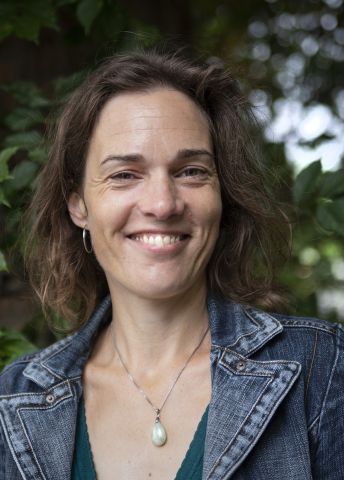
Jutta Bolt
Associate Professor of Economic History
Wallenberg Academy Fellow, prolongation grant 2021
Institution:
Lund University
Research field:
Economic history and development


Wallenberg Academy Fellow, prolongation grant 2021
Institution:
Lund University
Research field:
Economic history and development
Bolt is an economic historian with an interest in population dynamics. As a Wallenberg Academy Fellow, she is studying African population trends to identify mechanisms capable of explaining in an historical context the high rate of population growth in many countries – particularly in sub-Saharan Africa.
“It was a more difficult task than I first thought, but we have managed to take the initial steps towards a better understanding by using missionary records, among other things.”
Bolt and her colleagues have also gained access to previously unused records. In Zambia they found long-forgotten parish records that opened up a new door to history.
“We were able to copy some of the churches’ records, and gave them digital versions in return. Thanks to this local material, we have gained a better understanding of the key role played by missionaries in matters such as schooling and medical care, and how that in turn impacted population dynamics in countries such as Zambia and Cameroun, as well as other parts of Africa.
The records contain many accounts of epidemics – events that had a major impact on population trends. From this was born the idea of adopting a broader approach to historical patterns of disease in Africa.
“A new project took shape, which is a good example of how funding provided by the Knut and Alice Wallenberg Foundation works. It gives researchers the freedom to think along new lines.”
“Funding of a major project offers a researcher fantastic opportunities. It’s gratifying that other people believe in my ideas, and it gives me confidence as a researcher to be shown trust and to be given freedom. Being chosen as a Fellow has meant a lot to me, not only in relation to my field, but also in terms of my personal development.”
Bolt leafed through the transcribed documents and began to read about outbreaks of disease as described by nineteenth-century missionaries.
Meanwhile, history began eerily repeating itself as news spread of a new global pandemic – Covid 19. It transpired that several African countries reacted very effectively, with preventive measures such as contact tracing, testing and quarantining.
“I spoke with many colleagues, who confirmed that multiple countries in Africa took the pandemic seriously right from the outset. They were forced to act quickly because of their limited medical resources, but they also possess a different kind of experience. I believe that people learn from experience. Europe has been spared pandemics, but Africa has to face the spread of deadly diseases at regular intervals – about every ten or twenty years.”
Bolt was struck by the idea of tracing the differing approaches to the pandemic between countries in the historical material. The new project aims to create a digital atlas of diseases, surveying epidemics in Africa between 1850 and 1960.
“All the information we gather is integrated in a GIS system, which enables us to link the data to coordinates across Africa. So we can see how patterns of disease move geographically, for example by following an epidemic along a railroad or trade route.”
The survey is largely based on primary sources from 24 former colonies. Local parish records, missionary records and records of public authorities are digitized and transcribed using OCR technology capable of reading typewritten text. The material is compendious. The medical reports alone amount to at least 120,000 pages.
“The software will also attempt to read handwritten text, but this is still somewhat problematic,” Bolt explains.
One goal of the project is to greatly advance our knowledge of the history of disease in Africa.
“We want to combine information from former British and French colonies, which has rarely been done, and compare regions. Hopefully, we’ll start to see key patterns that can form the basis for more theoretical studies.”
But the project is not only of academic value; it has a social value. Bolt elaborates:
“The knowledge we are producing is about a healthy life for all. A digital atlas of disease will be available to the public. We can obtain new knowledge about where diseases occur over time, and learn more about the contexts and extent of outbreaks of disease.”
The historical patterns may also help to explain why present-day governments dealt with the Covid-19 epidemic in different ways. The researchers hope that the database will show how public authorities have acted in response to earlier epidemics.
“If we can find similar patterns over a long time period, it may be of interest to compare the initiatives that were effective earlier with those that are effective now. That knowledge may also be useful when authorities are formulating future disease control measures.”
Bolt is keen for the findings to be presented and discussed in Africa. Her previous project concluded with a scientific conference in Kenya.
She also mentions the importance of her mentor Lisa Smith in her Wallenberg Academy Fellow program.
“Lisa has a large network among African organizations, which offers an opening to disseminate our research findings. Contact has also been established with the World Bank and the UN to link my findings to their research network, which may further help to spread this knowledge.”
Text Nils Johan Tjärnlund
Translation Maxwell Arding
Photo Åsa Wallin